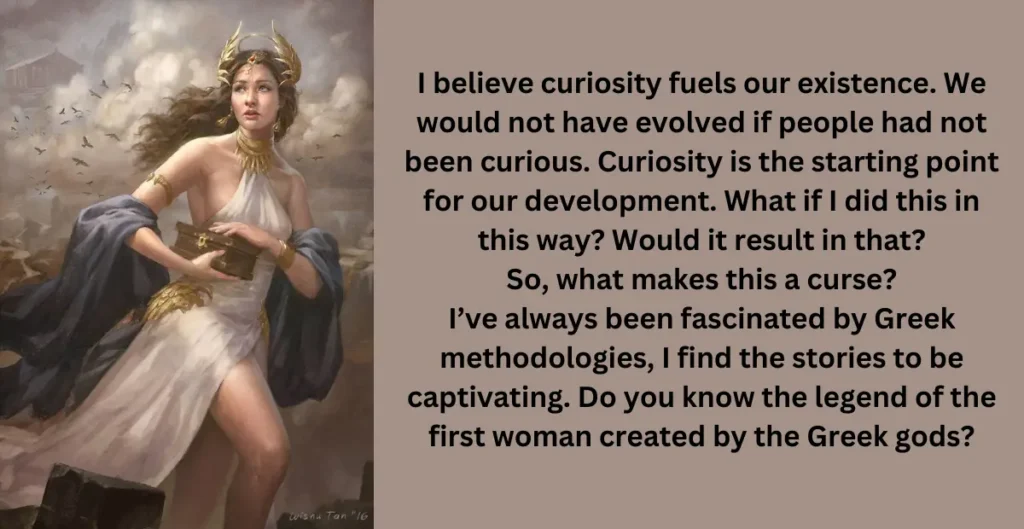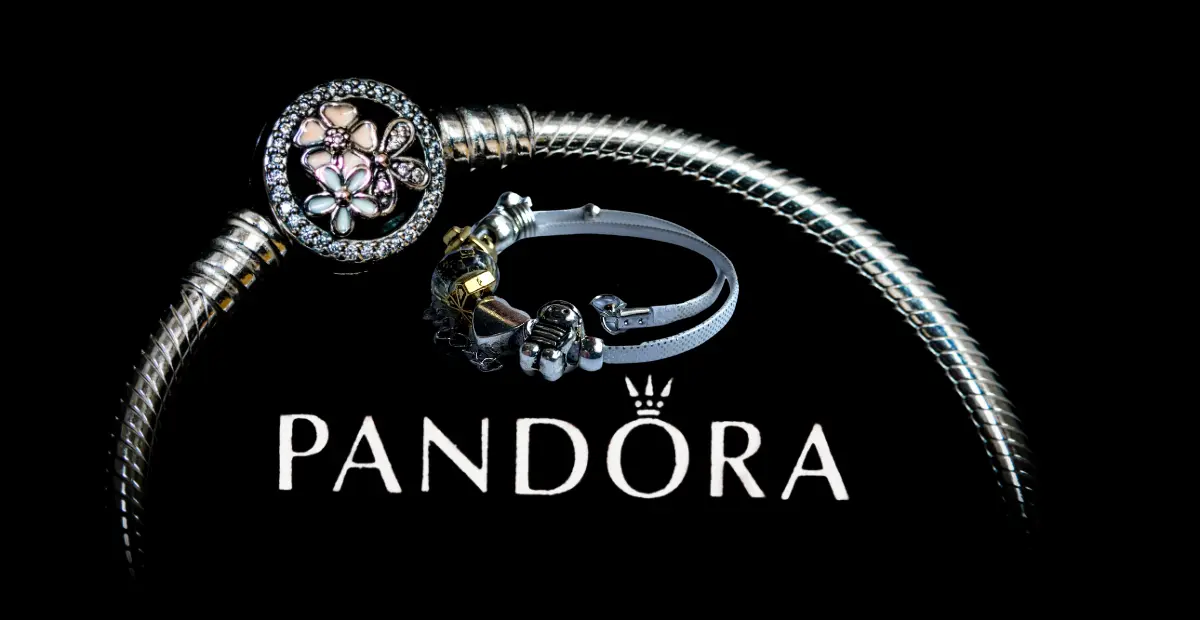Introduction:--
Pandora is a famous figure from Greek mythology, known for her curiosity and mysterious box. Here’s the breakdown:
The First Woman: According to the myth, Pandora was the first woman ever created. Gods like Hephaestus fashioned her and endowed her with beauty and charm.
A Deceptive Gift: The gods also presented Pandora with a jar or a box, sometimes called Pandora’s Box. This box contained all the evils that could plague humanity, like disease, toil, and jealousy. Importantly, the gods forbade Pandora from opening it.
Curiosity Unleashed: Driven by curiosity, Pandora disobeyed the gods and peeked into the box. This act unleashed all the evils upon the world, bringing suffering to humankind.
A Glimmer of Hope: There’s a variation to the myth where the box contains both evils and blessings for humanity. In this version, all the blessings escaped except for hope, which remained trapped inside.
The Mythological Origin of Pandora
Ah, I apologize for the misunderstanding. Let’s delve into the mythological Pandora, the first woman in Greek myth.
Pandora's Creation and Gifts:
- Theogony: The earliest account comes from Hesiod’s “Theogony” (8th-7th centuries BC). Here, a woman is created, but not named, as punishment for humanity receiving fire from Prometheus.
- Hephaestus’ Craft: Zeus, king of the gods, commissions Hephaestus, the god of craftsmanship, to mold Pandora from clay.
- Gifts of the Gods: Each Olympian bestows a unique gift upon her. These could be beauty, charm, curiosity (from Hera), or skills like weaving (from Athena). Her name, Pandora, translates to “all-gifted” reflecting these endowments.
The Jar and Epimetheus:
- A Jar of Trouble: Hesiod, in his later work “Works and Days”, introduces the famous jar. Zeus entrusts Pandora with a beautiful jar containing all the evils of the world, with strict instructions never to open it.
- Epimetheus’ Mistake: Prometheus, a trickster Titan and champion of humanity, warns his brother Epimetheus to be wary of gifts from the gods. However, Epimetheus forgets this advice and is captivated by Pandora’s beauty. They marry.
Pandora's Curiosity and Hope:
- The Forbidden Jar: Overcome with curiosity about the jar’s contents, Pandora finally opens it, unleashing plagues, toil, and suffering upon humanity.
- A Glimmer of Hope: According to Hesiod, only hope remains trapped inside the jar as Pandora manages to shut the lid in time.
Interpretations of the Myth:
- The Price of Progress: The myth can be seen as a cautionary tale about the dangers that accompany human advancement. Fire, a gift from Prometheus, brought progress but also unleashed unforeseen consequences. Pandora’s curiosity, another gift, further complicates the human experience.
- The Duality of Woman: Some interpretations view Pandora as a symbol of the complex nature of women. She embodies beauty and curiosity, but also the potential for unintended harm.
Pandora in Literature and Culture
Pandora’s story has transcended its ancient Greek origins and found a home in various forms of literature and culture throughout history. Here’s a glimpse into her enduring influence:

Click Here – (Story is here)
Literature:
- Classical Retellings: Ovid, a Roman poet (1st century BC), retold the myth in his “Metamorphoses,” emphasizing the destructive nature of the evils released.
- Modern Literature: Playwrights, poets, and novelists have continued to explore the myth. John Milton’s “Paradise Lost” draws parallels between Pandora and Eve, both figures associated with the introduction of suffering. In feminist literature, Pandora can be seen as a victim of patriarchal control.
Art:

- Visual Depictions: Artists have been captivated by Pandora for centuries. Paintings by artists like John William Waterhouse and Dante Gabriel Rossetti portray her beauty and curiosity, often alongside the ominous jar.
- Sculptures: Sculptures depicting Pandora capture her essence and the drama of the myth.
Pop Culture:
- Modern References: The term “Pandora’s Box” has become a common idiom to describe a situation that unleashes unforeseen problems. It’s referenced in movies, TV shows, books, and even the music streaming service named after her.
- Modern Reimaginings: Modern stories often reinterpret the myth. In some works, Pandora becomes a more heroic figure, actively defying the gods or seeking to overcome the evils released.
Pandora in Modern Interpretations
Modern interpretations of Pandora’s myth offer fresh perspectives that resonate with contemporary issues. Here are some interesting takes:
Feminist Lens:
Victim of Patriarchy: Some interpretations challenge the traditional view of Pandora as solely responsible for unleashing evils. They argue she was a pawn in the gods’ games, a victim of Zeus’s manipulation and Epimetheus’s naivety. The focus shifts to the limitations placed upon her and the lack of agency she possesses.
Technological Parallels:
The Dangers of Progress: The myth is seen as a cautionary tale for the rapid technological advancements of our time. The internet, nuclear power, and genetic engineering can be seen as Pandora’s jar, offering incredible potential but also harboring unforeseen consequences.
The Power of Curiosity:
Curiosity as a Virtue: Modern interpretations can celebrate Pandora’s curiosity as a positive force. The pursuit of knowledge, even if it leads to unintended consequences, is essential for human progress. The story becomes a reminder to embrace curiosity responsibly and learn from mistakes.
Environmental Concerns:
Ecological Pandora’s Box:Climate change and environmental degradation can be seen as modern evils unleashed by human actions. The myth becomes a call for responsible stewardship of the planet, highlighting the potential consequences of ignoring warnings and pushing boundaries.
Hope as an Active Force:
Harnessing Hope: Some interpretations go beyond the idea of hope as a mere survival mechanism. Pandora may be seen as actively working to mitigate the evils released, symbolizing the power of human action and collective effort to overcome challenges.
The Significance of Pandora Today
Pandora’s myth remains significant today for several reasons:
- A Cautionary Tale for Progress: The story serves as a warning about the potential downsides of progress. As we grapple with complex issues like artificial intelligence, genetic engineering, and climate change, the myth reminds us to consider the potential consequences before unleashing unforeseen evils.
- The Nature of Curiosity: Human curiosity is a double-edged sword. It drives innovation but can also lead us down unforeseen paths. The myth prompts us to question the nature of curiosity and how to balance it with responsible action.
- The Duality of Hope: The enduring message of hope trapped within the jar offers solace. Even amidst challenges, humanity retains the capacity to find solutions and build a better future.
- A Lens for Modern Issues: The myth can be applied to various modern issues. Climate change becomes a Pandora’s box of environmental consequences. The internet, with its vast potential and hidden dangers, becomes another modern interpretation of the forbidden jar.
- A Catalyst for Discussion: The ambiguity of the myth creates a space for discussion and debate. Was Pandora a victim or an agent of chaos? Does hope offer a passive comfort or a call to action? Engaging with these questions keeps the myth relevant.
- A Source of Inspiration: Reinterpretations of Pandora in art, literature, and pop culture breathe new life into the myth. These modern portrayals can inspire us to confront challenges, embrace curiosity responsibly, and harness the power of hope to create a better world.


